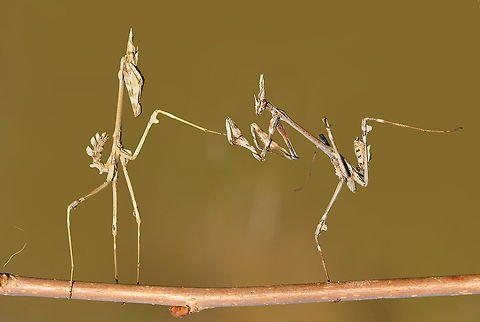FEATURES
| Class: Insects Size: It can grow up to 15 cm with females being larger Colour: Green, grey, yellow, brown and can camouflage to make them difficult to see. Diet: They feed mainly on other insect species, caterpillars and sometimes small reptiles and amphibians. |
Empusa fasciata is called a praying Mantis because when defending or preparing to attack a prey , it raises its front legs, so that it takes a posture that resembles a man praying. The name Empusa comes from Greek mythology. Empusa was a hideous ghost that often transformed itself into various forms and fed on human flesh. She was sent by Hecate as a harbinger of misfortune.
There are more than 2400 different species of mantids all over the world, while in Cyprus 8 different species have been recorded. The praying mantis can turn its head 180 degrees, which gives it almost unlimited visibility. When in close proximity to its prey, it is completely immobile and with quick movements it can grab its prey and devour it.
Females are always larger than males and during the mating season they secrete pheromones to attract males. A gruesome feature observed during mating is that the females decapitate the males and devour them to provide nutrients for their offspring. They lay 50-300 eggs usually in bushes, trees, dry grasses or even under stones, with their life cycle lasting about a year.
The tips of its 4 long legs are so thin that you could easily think they are pieces of green or dry twigs or stems of grass.
Since the Mantis feeds on insects, it can also be considered an ally of farmers and gardeners, as it controls the population of harmful bugs. The threats it faces are indiscriminate spraying that destroys its habitats, while its natural predators are birds, rodents, hedgehogs and reptiles.




